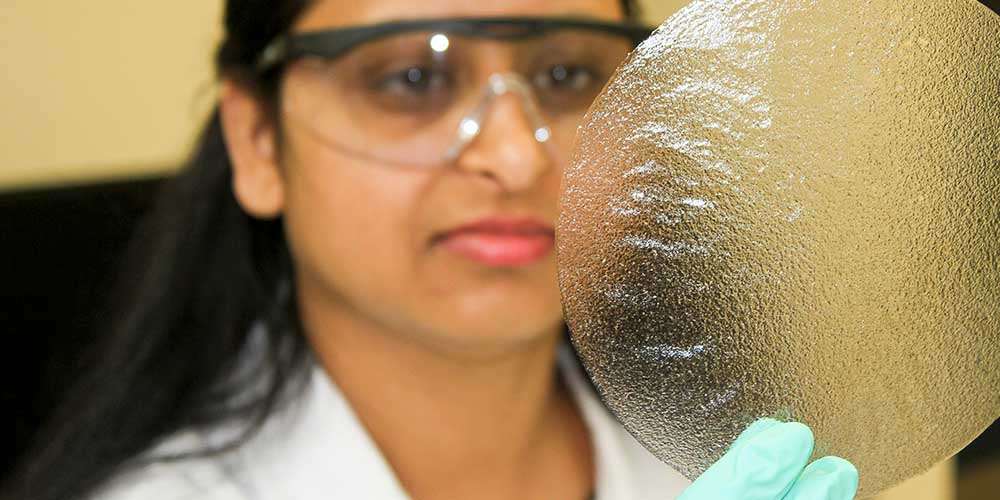Biofuels, Chemicals, and Energy Stories

Natural Food Protection
Since plastic waste is a growing threat to ecosystems worldwide, scientists are exploring more eco-friendly alternatives. Dr. El Barbary Hassan, professor in sustainable bioproducts and FWRC researcher, has been developing bionanocomposite films that could preserve and protect food products as effectively as petrochemical-based plastics. Hassan and his team combined chitosan, a substance found in the shells of crustaceans, with TEMPO-oxidized cellulose nanofibers from cotton stalks to produce bionanocomposite films. They found that these films were more effective than 100% chitosan films because they reduced moisture and oxygen transfer and had higher heat stability, transparency, and flexibility. This film, they found, would be an effective biodegradable product for use in food packaging.
2017

Water and Oil
Dr. El Barbary Hassan, a professor at Mississippi State, is collaborating with Mohamed El-Sakhawy from Egypt on a study to convert agricultural waste into renewable biofuels and wastewater treatment adsorbents. Funded by the U.S. Egypt Science and Technology Joint Fund, the study uses rice straw—abundant in both the U.S. and Egypt—to create bio-oil and biochar through pyrolysis. The U.S. team is focused on developing renewable biofuels, while the Egyptian team works on creating low-cost adsorbents for wastewater treatment. This project aims to reduce greenhouse gas emissions from agricultural waste, while producing valuable products for renewable energy and environmental management.
2023

Green is the New Black
Dr. Jilei Zhang, a scientist at Mississippi State University, is researching the production of lignin-based graphene, a sustainable alternative to traditional graphite. Lignin, a byproduct from paper mills, is typically burned for energy, but Zhang's work explores turning it into bio-graphene oxide, which could have high-value applications. His team has successfully patented methods for producing graphene from lignin, with potential uses in concrete, batteries, and water treatment. Despite challenges in scaling production, Zhang is optimistic about its commercial potential, securing funding to continue research and development, particularly in strengthening concrete and removing heavy metals from water.